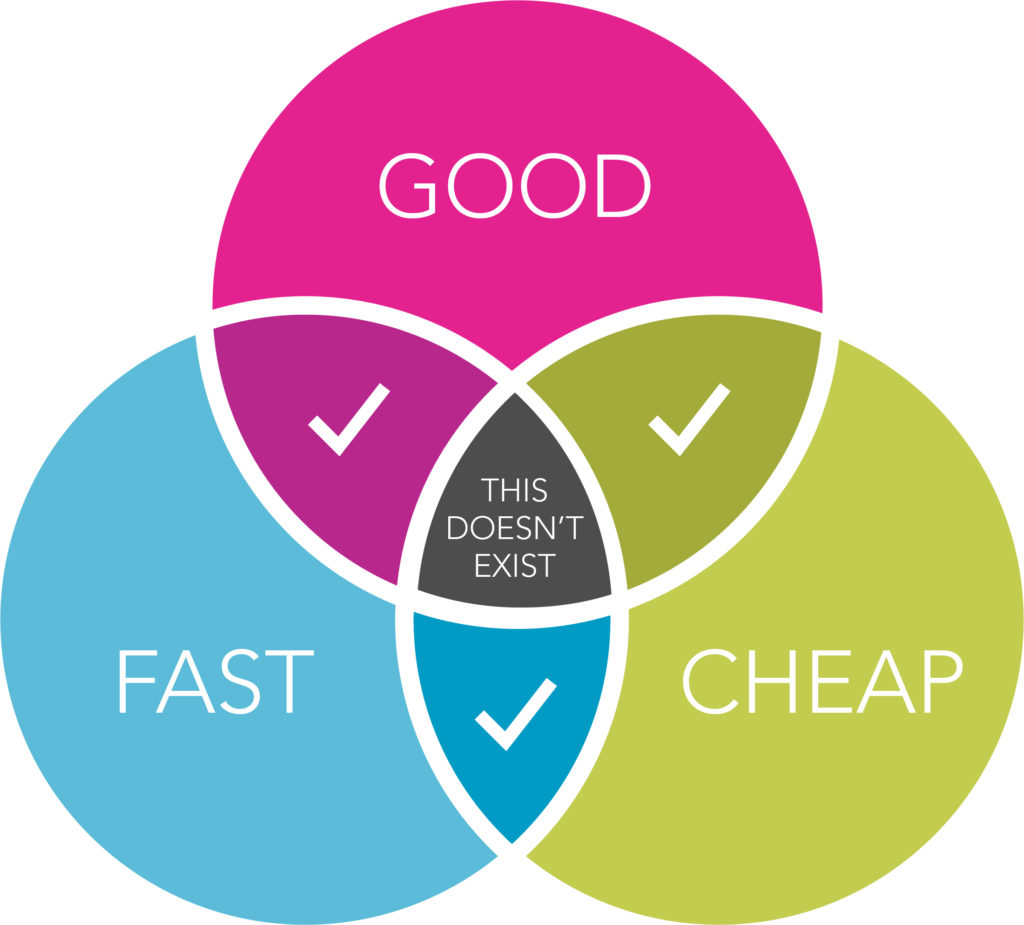If you asked 10 different people to define marketing, you’d likely get 10 different answers. Why? Because we are individuals who perceive, experience and navigate things completely differently. Therein lies both the challenge and fun of marketing.
But, no matter who you ask, there are some fundamentals that you just can’t get around. Whether you’re a newbie thrown into the deep end or a seasoned pro, we can all benefit from a refresher course. So, sharpen that pencil; class is in session.
Here are five marketing basics to help you meet your long-term business goals.
Brand Identity
Many factors make up the identity of a business. Branding is not exclusive to physical design elements. It’s how we speak or communicate with our audience. It’s the tone we use. It’s our business values and core attributes. It’s our employee culture and the overall customer experience.
Those attributes combine to create a truly unique business identity, making a company distinguishable to others. For instance, are you quirky, serious, trustworthy or trendy? Taking the necessary time to nail it down is imperative, because if you get it wrong, it can negatively impact every single thing you put into the world as a marketer.
Even worse, you’ll find yourself second guessing your brand because it doesn’t truly represent who you are as a company. It can also lead to lack of alignment across the organization and ultimately a negative impact on the bottom line, which of course is the exact opposite of the desired outcome.
Let’s use logos as an example. A strong logo identity is simple, scalable and memorable. A bad logo is over-complicated, gaudy, overly bright or boasts a mis-matched color palette. Complex designs do not scale well, which means that a lot of the detail that’s visible at a large scale becomes lost, blurred or illegible when shrunk down. Your logo should be as effective at one inch wide as it is at three yards.
Additionally, the human brain isn’t equipped to quickly process or remember an overload of complex visual details. Think of your logo like a stamp of your customer’s brain; if it’s going to stick, it has to be digested quickly and imprinted in their minds. Color is also really important; it’s a communicator and the way colors are combined can affect the way your audience feels about your brand. Color engages the senses and incites emotion; think about it like showing up in a bad outfit.
Building a Budget
When it comes to marketing, you can do it fast, good or cheap; but the simultaneous trifecta simply doesn’t exist.

Per the U.S. Small Business Administration, businesses with revenues below $5 million should allocate 7-8 percent of their revenue to marketing. That means if you have one million in revenue, you can expect to put $70,000 a year into marketing your business. Good marketing comes at a price, and it can be hard to know where to invest.
- Good and Fast: You’ll pay a premium.
- Cheap and Good: While they may produce quality deliverables, it may take forever, they may be unresponsive when you need them, or flat-out disappear.
- Fast and Cheap: Their investment in your success is basically zero, the final products won’t be good, and you’ll spend more money later redoing it all.
Marketing and creative are not commodities; supply and demand shouldn’t dictate what you spend. This doesn’t mean you have to pay top dollar, either, but it makes the argument for why you should not evaluate a marketing vendor on cost alone.
The budgeting discernment process should include some consideration about what you can DIY vs. outsource. Your budget will likely not allow you to do everything you want to do, so take some time to identify your priority needs and find a solution that delivers desired outcomes.
This outsourcing guide can help walk you through this exercise.
Quick tip on this; you’re an expert in your field. Focus on that and decide where you can hire marketing experts to guide you as needed. If you hire the right vendors, you’ll be secure in trusting them to get their job done so you can focus on yours.
Evaluating Your Vendors
Once you’ve identified your outside needs, the vendor procurement process can be tricky to navigate as well. Here are some quick red and white flags to look for as you dig in:
Red Flags:
- If it sounds cheap, it probably is, and the product likely will be too. Keep in mind that cheap is more than just a dollar value.
- If there is not a contract or scope of work, cue the warning bells. These items make it clear what’s included in your deliverables and what isn’t. We’ve heard many a story that begins with, “I hired a company to design my website, and they didn’t do any SEO!” Just like fries cost extra when you buy a burger at McDonald’s, a website does not “come with” SEO, as that requires a different skill set and area of expertise.
- Be wary of companies who guarantee marketing results. As good as it may sound, you cannot guarantee a specific number of leads or fixed amount of quality web traffic. In marketing, we set goals, build strategy around those goals, execute and iterate constantly. There is never a magic bullet.
White Flags:
- Your vendor asks a lot of questions. True creative partners reciprocate the investment you make in them; they want to get to know you, your business and your goals so they can help you succeed. This requires a lot of details.
- A clearly defined scope and timeline is provided.
- They are responsive and make time for you.
- They genuinely have your best interests at heart. They care about clients, think about their futures and provide proactive suggestions for how they can achieve their goals.
Tracking the Data
While it may seem like an easy item to keep moving down the priority list, doing so won’t help you grow. You must keep a close pulse of what’s working as is, what’s a waste of your time and where you should double down.
Marketing success is all about pivoting; if something isn’t working, do something else. If it’s working well, use your data to help it work even better. Investing time on the front end to get this in place provides a baseline to measure against, and the opportunity to tangibly demonstrate the value of your work.
The great news here is that in the digital space, the focus on data is growing every day, which means the available resources to support efficient tracking of said data is growing as well. At a minimum, make sure you have Google Analytics up and running on your site. Access to statistics like site visitors, demographics, acquisitions, devices, and time spent are just the tip of the iceberg of the insights you can explore.
In addition, if you’re active on social media, pull monthly reports and analyze results (traffic, leads, conversions, sales, etc.). Consider maximizing your efforts by using dashboard tools that allow you to consolidate and analyze data more efficiently. We use HubSpot Professional to track analytics, social statistics, sales data and more under one umbrella.
Favorite Resources
If all of this feels overwhelming, you don’t have to make sense of it solo. Drop us a line; we’d be happy to jump into the trenches beside you and start shoveling. In the meantime, we’ll leave you with a few of our favorite go-to resources.
- Website Content Management Systems: WordPress
- Digital Data + SEO: Google Analytics,Yoast SEO Premium
- Digital Marketing Support: HubSpot CRM, Marketing Professional, Sales and Service Platforms
- Social Media Management: HubSpot, Hootsuite, Buffer
- Graphic Design for the layperson: Canva
- Free Stock Photos: Unsplash, Pexels, Negative Space
- Project Management: Asana, Airtable
- Time Tracking: Harvest
- Communication/Collaboration: Slack





